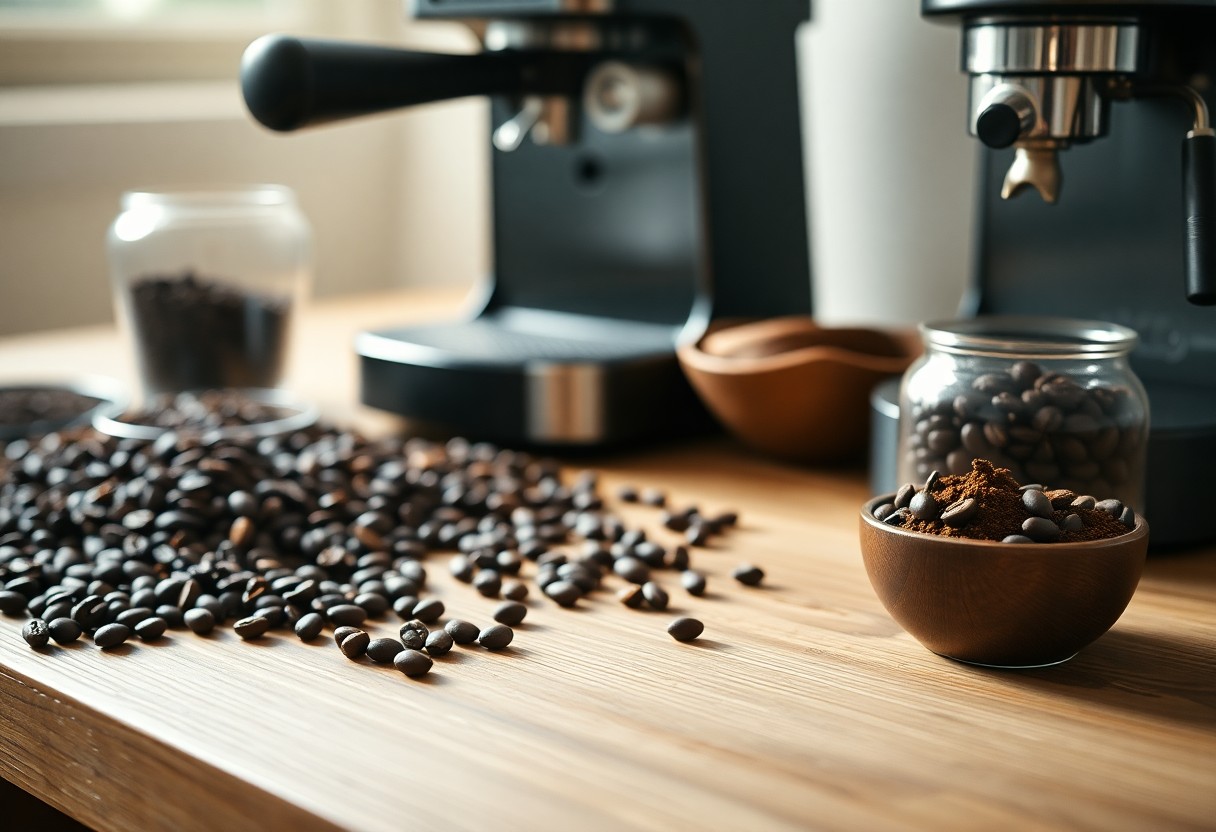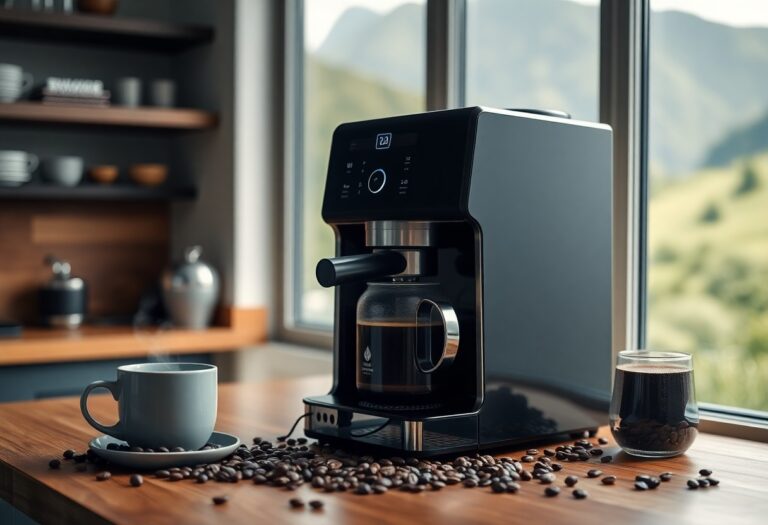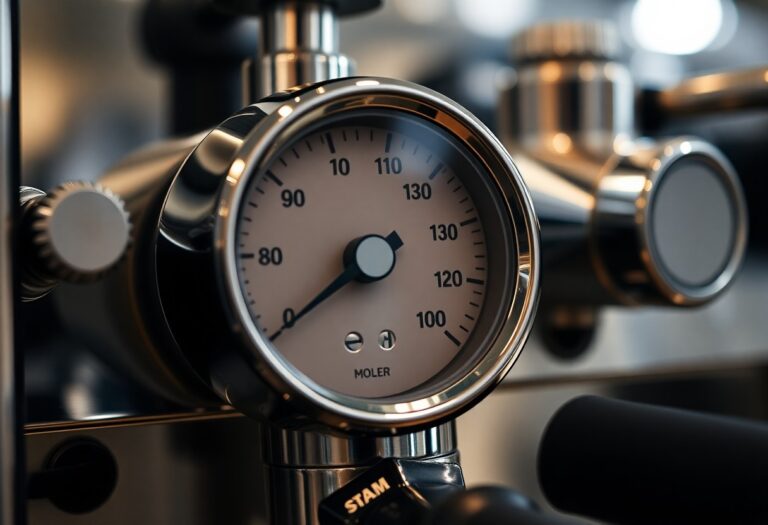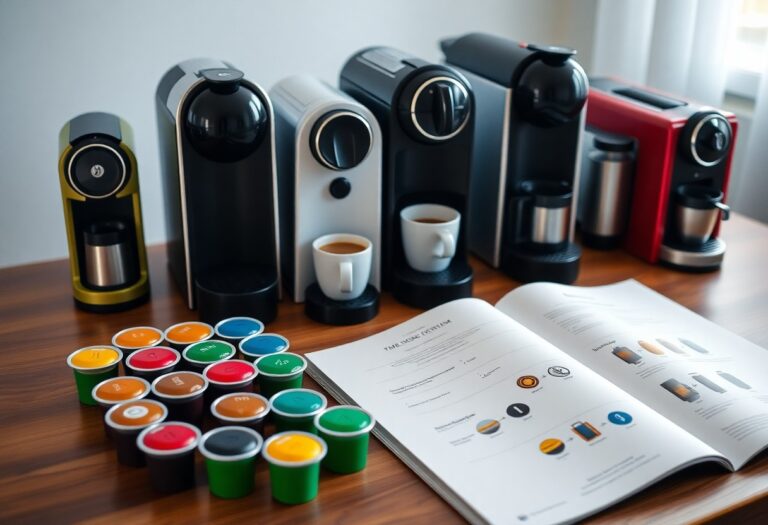What Type of Coffee for an Espresso Machine – Bean and Grind Guide
Espresso is known for its rich, bold flavor, and selecting the right type of coffee is crucial to achieving the perfect shot. You should look for a dark roast or espresso-specific blends that yield a balanced flavor profile with sweet and bitter notes. The grind is equally important; aim for a fine consistency to ensure optimal extraction. For more detailed insights, check out this Guide To Espresso to elevate your brewing experience.
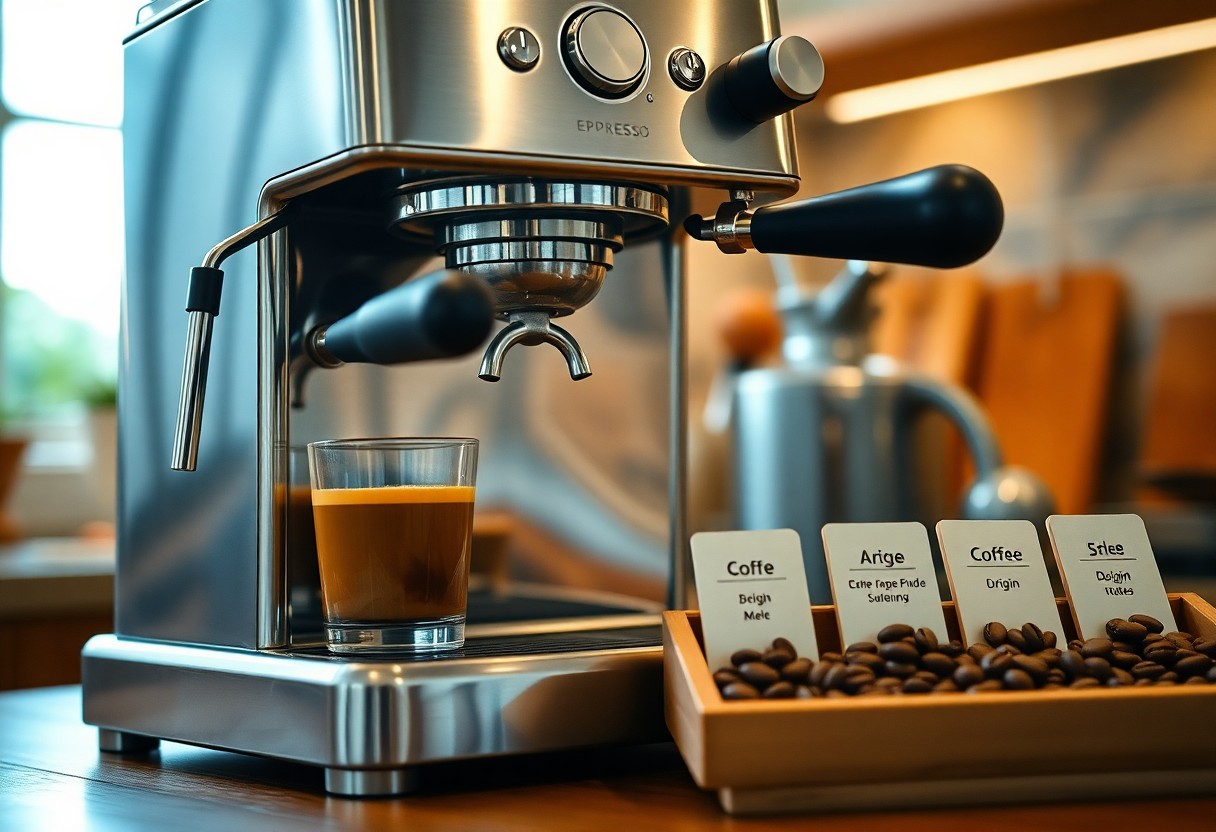
Key Takeaways:
- Choose high-quality coffee beans, ideally a blend specifically intended for espresso to enhance flavor and depth.
- Opt for a medium to dark roast to achieve the rich, bold flavors characteristic of espresso.
- Grind size is important; a fine grind is necessary for optimal extraction and to create the perfect crema.
- Experiment with various bean origins and flavor profiles to find the unique taste that suits your palate.
- Freshly ground coffee yields the best results, so grind beans just before use for maximum flavor.
The Art of Selection: Coffee Beans for Espresso
Understanding the intricacies of coffee bean selection elevates your espresso experience. You’ll want to focus on specific qualities that enhance the rich, bold character synonymous with espresso. Factors like bean variety, origin, and freshness play key roles in determining the final flavor profile of your espresso shot.
The Flavor Spectrum: Arabica vs. Robusta
Arabica and Robusta beans present distinct flavor profiles that greatly influence your espresso. Arabica offers a sweet, complex taste with hints of fruit and acidity, making it ideal for balanced espresso. Robusta, on the other hand, delivers a stronger, earthy flavor with a higher caffeine content, contributing to a thicker crema and a bolder espresso experience.
Bean Origin and Its Impact on Taste Profiles
The origin of your coffee beans shapes their unique characteristics. Different regions produce beans with distinct flavor notes due to variations in climate, soil, and cultivation methods. For instance, beans from Colombia often embody a smooth, nutty profile, while those from Ethiopia typically present fruity and floral notes, enriching the complexity of your espresso.
The impact of bean origin on your espresso’s taste can be profound. For example, Sumatran beans often exude deep, earthy flavors with herbal undertones, contrasting sharply with the bright acidity and citrus flavors found in beans from Central America. Exploring these diverse origins allows you to tailor your espresso to your personal preferences, enhancing your overall coffee experience.
The Influence of Freshness and Roast Date
Freshness plays a pivotal role in achieving the perfect espresso shot. Coffee beans are at their peak flavor within two to four weeks after roasting. Consuming beans past this window can lead to a dull taste, diminishing the rich characteristics you seek in espresso.
Monitoring roast dates ensures you enjoy maximum flavor from your beans. For instance, beans that are freshly roasted from a local roastery often showcase vibrant aromas and nuanced tastes, whereas older beans may exhibit a flat or rancid flavor. Prioritizing freshness provides you with a more delightful, aromatic espresso that captures the essence of the beans’ origin and variety.
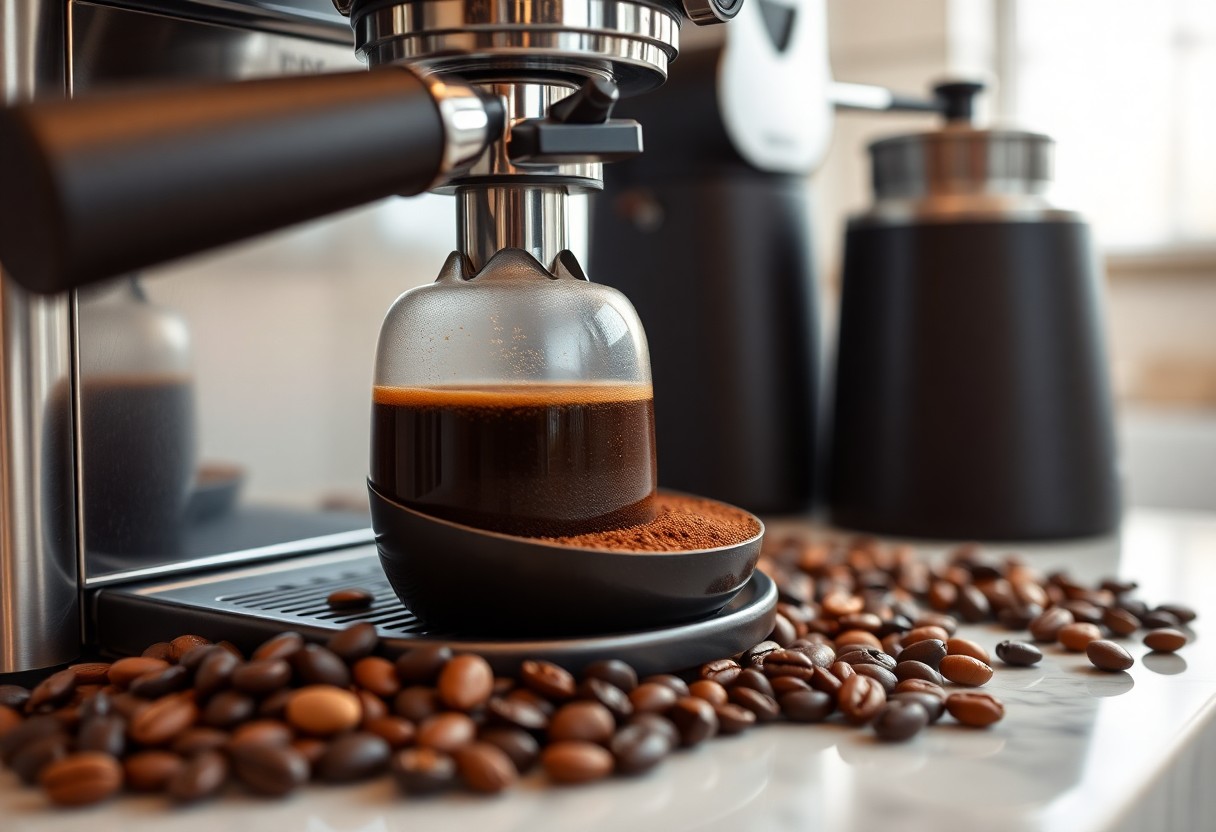
Grinding for Perfection: The Crucial Grind Size
Achieving the right grind size is vital for creating an exceptional espresso. It’s not just about the type of beans you use; the grind will significantly influence extraction, flavor, and overall quality of your shot. Finding the sweet spot entails adjusting your grinder settings to ensure the coffee grounds are uniform, which directly impacts how water interacts with the coffee during brewing.
Understanding Grind Consistency: Fine vs. Coarse
Espresso requires a fine grind for optimal extraction. Unlike other brewing methods that can accommodate coarser particles, a fine grind allows for a greater surface area, ensuring that water extracts the necessary flavors within the short brewing time of 25 to 30 seconds.
How Grind Size Affects Extraction and Flavor
Grind size plays an integral role in extraction and the resultant flavor profile. Finer grinds increase the surface area, leading to quicker extraction of oils and soluble compounds, which enhances the espresso’s body and complexity. Conversely, a coarser grind can cause under-extraction, resulting in a thinner, more acidic cup. This balance of grind and brewing time is key to achieving your desired flavor profile.
Over-extraction can occur if the grind is too fine, leading to bitter tastes, while under-extraction from a coarser grind often results in sour notes. Ideal espresso should have a well-rounded flavor, showcasing sweetness from the coffee’s natural sugars. Keep experimenting with your grind size to discover the unique flavors your beans have to offer and to avoid the harshness that can mar a good shot.
Recommendations for Different Espresso Styles
Tailoring your grind size according to the espresso style can elevate your experience. For classic espresso shots, aim for a fine grind resembling powdered sugar, while for a ristretto, consider an even finer texture. Conversely, for more robust drinks like Americanos, a slightly coarser grind can work well.
Specific espresso styles benefit from distinct grind sizes; a flat white or cappuccino might require a medium-fine grind to balance the milk’s creaminess with the espresso’s intensity, whereas a straight espresso demands finesse with a finer grind. Experimenting with these grind adjustments allows you to discover your perfect shot, enhancing each unique espresso experience tailored to your preferences.
Brew Methods: Tailoring Coffee Choices to Espresso Machines
Choosing the right coffee for your espresso machine depends largely on your brewing method. Different machines, whether manual or automatic, require various coffee beans and grind sizes to achieve optimal flavor. Manual machines allow for greater control over brewing variables, while automatic machines streamline the process, producing consistent results. Understanding these distinctions can enhance your brewing experience and result in the perfect shot of espresso.
Manual vs. Automatic: Which Coffee to Choose?
For manual espresso machines, you’ll benefit from experimenting with single-origin beans that offer a variety of flavor notes. You have the flexibility to adjust grind size and extraction time, potentially highlighting unique taste profiles. Automatic machines usually require a finer grind for consistent pressure and flavor extraction. Selecting coffee blends that are well-balanced and espresso-specific will yield superior results in this scenario.
Single vs. Double Shots: Bean Quantity Considerations
Single and double shots of espresso differ in the amount of coffee beans used, impacting both the flavor and strength. A standard single shot requires about 7-9 grams of coffee, while a double shot typically needs around 14-18 grams. This difference not only alters the intensity of your drink, but also the extraction process, leading to variations in taste and crema quality.
The choice between single and double shots can significantly affect your espresso experience. Using the right amount of beans is necessary for proper extraction. While single shots offer a lighter, nuanced flavor, double shots provide a richer, bolder taste profile. If seeking intensity, opt for a double shot with a dark roast. Alternatively, a single shot made from a high-quality light roast may elevate subtler tasting notes, emphasizing complexity over strength.
Specialty Espresso: Coffee Pairings for Unique Flavors
Pairing specialty coffee beans with your espresso can lead to exciting flavor combinations. Consider beans with distinct tasting notes like floral, fruity, or nutty characteristics. These flavors can be accentuated with various brewing techniques, resulting in a uniquely delightful espresso experience. Selecting high-grade specialty beans often provides opportunities to explore unexpected dimensions in every cup.
Exploring specialty espresso opens doors to flavor exploration that few casual drinkers experience. For instance, pairing coffee beans with a lavender or citrus profile can create an unforgettable aromatic experience. When brewed properly, these beans can transport your sensory experience, providing layers of taste that complement pastries or chocolate desserts. The right pairing not only enhances the espresso itself but also transforms your overall coffee moment into something special.
Tasting Notes: Navigating Flavor Profiles and Coffee Characteristics
Exploring the world of coffee flavors takes your espresso journey to new heights. The right balance of aroma, acidity, and body not only enhances the drinking experience but also shapes your preferences. Distinct flavor profiles emerge from various beans, and each cup tells a unique story of its origin, processing, and roast level. Understanding these nuances allows you to select the perfect coffee that aligns with your palate.
Aroma, Acidity, and Body: The Trio of Quality
The core elements of coffee quality—aroma, acidity, and body—interact to create an overall flavor experience. Aromas convey the first impression, offering hints of what’s to come; acidity brings brightness and complexity, while body adds richness and mouthfeel. A well-balanced espresso features these three components harmonizing, making for a delightful sip that invites you back for more.
Identifying Flavor Notes and Their Sources
Flavor notes in coffee can range from fruity to nutty, and understanding their sources enhances your appreciation. For instance, beans from Ethiopia often exhibit floral and citrus notes, while Central American beans are more likely to be characterized by chocolate and caramel. Factors like the altitude at which beans are grown and the processing method significantly influence these flavor characteristics.
Each coffee origin and processing method leaves an imprint on flavor notes. For example, washed coffees tend to have a cleaner and more pronounced acidity, allowing delicate notes such as jasmine or peach to shine. In contrast, natural processed coffees might be more syrupy and fruity, often showcasing deeper flavors like raisin or berry. Identifying these notes not only enriches your experience but makes it easier to select the beans that cater to your unique taste.
How to Build Your Flavor Palette for Espresso
Building a flavor palette for espresso involves both experimentation and exploration. Start by sampling different beans and taking notes on your impressions, focusing on aromas and taste sensations. Gradually, as you broaden your palate, you’ll find preferences for particular sources and flavor notes that resonate with you.
To build your flavor palette effectively, engage with a variety of roasters and styles, from light to dark roasts. Attend cupping sessions, and explore brewing methods to understand how different variables impact flavor. Consistently tasting and comparing will help you recognize subtle differences, ultimately leading to a more personal and satisfying espresso experience tailored to your senses. Enjoy the adventure as you discover your favorite notes and blends along the way.
Elevating Your Espresso Game: Coffee Maintenance and Storage Tips
Enhancing your espresso experience goes beyond selecting the right beans and grind. Implementing proper coffee maintenance and storage techniques can significantly influence the taste and quality of your espresso. Adhering to best practices helps preserve the integrity of your coffee:
- Store your beans in an airtight container to prevent oxidation
- Keep them in a cool, dark place for optimal freshness
- Regularly clean your equipment to avoid flavor contamination
- Grind just before brewing for the freshest taste
This ensures you enjoy the best possible espresso experience every time you brew.
The Importance of Proper Storage: Keeping Beans Fresh
Maintaining the freshness of your coffee beans starts with proper storage. Exposure to light, heat, and moisture can diminish their flavors and aromas. Opt for an opaque, airtight container to safeguard against these elements and ensure your beans remain vibrant. Storing your beans in a consistent temperature environment, such as a pantry away from the stove, extends their life, allowing you to savor each cup’s unique characteristics for a longer period. Keep in mind that whole beans retain their freshness longer than ground coffee, making it worthwhile to invest in a quality grinder.
Grinder Maintenance for Optimal Performance
A well-maintained grinder is vital to achieving the best espresso. Regularly cleaning your grinder helps prevent the buildup of old coffee residues that can taint the flavor of your brew. To maintain optimal performance, ensure that you remove and clean the burrs or blades every few weeks and recalibrate your settings as needed. Regular maintenance not only prolongs the life of your grinder but also ensures a consistent grind size, leading to a more balanced extraction.
Over time, coffee oils can accumulate inside your grinder, leading to stale flavors in your espresso. Schedule a thorough cleaning every few weeks by disassembling the grinder and using a gentle brush to remove any coffee particles. For burr grinders, you can also run a small amount of uncooked rice through them to absorb oils and clean them further. Keeping your grinder in peak form ensures that each cup of espresso bursts with the rich flavors you desire, making your coffee routine something to look forward to.
Understanding Brew Alterations: Making Adjustments to Taste
Making adjustments to your brew can dramatically influence the taste of your espresso. Factors such as grind size, shot time, and dose amount can either enhance or muddle the flavors of your coffee. Experimenting with these variables allows you to fine-tune your brew to match your personal flavor preferences. Small changes can yield significant flavor variations, so don’t hesitate to take notes on adjustments and results.
It’s all about finding the perfect balance for your palate. If your espresso tastes overly bitter, consider a coarser grind or a shorter extraction time. Conversely, if you’re finding your espresso too weak, you might need a finer grind or longer extraction. Documenting these adjustments can help you recreate your best brews consistently. Just remember, the art of espresso making is as much about personal preference as it is about technique, so trust your taste buds in this delicious journey.
Conclusion
With this in mind, selecting the right coffee beans and grind for your espresso machine is crucial to achieving the perfect shot. Opt for high-quality, freshly roasted beans with a fine grind to unlock the rich flavors and enhance your espresso experience. Experiment with different blends and origins to find what suits your taste preferences best. By paying attention to these details, you can elevate your home brewing to café-level quality with every cup you prepare.
FAQ
Q: What type of beans should I use for my espresso machine?
A: For optimal results, choose high-quality Arabica beans or a blend of Arabica and Robusta. Arabica beans tend to offer a sweeter, more complex flavor, while Robusta beans provide a stronger body and better crema. Look for beans that have been specifically labeled for espresso or have a roast profile that matches espresso brewing.
Q: How fine should I grind my coffee for espresso?
A: The ideal grind size for espresso is very fine, similar in texture to table salt or even a little finer. This grind allows for proper extraction during the short brewing time of espresso, ensuring a rich flavor and good crema. If the grind is too coarse, the coffee may taste weak; if too fine, it could lead to over-extraction and bitterness.
Q: How fresh should my coffee beans be for espresso?
A: Freshness is key when brewing espresso. Ideally, use beans that were roasted within the last few weeks. Beans reach their peak flavor within 2 to 14 days post-roast, so avoid using older coffee to ensure your espresso has the best aroma and taste. Store beans in an airtight container away from light and moisture to maintain freshness.
Q: Is the roast level important for espresso?
A: Yes, the roast level significantly impacts espresso flavor. Medium to dark roasts are common for espresso because they develop richer flavors and fuller body. A medium roast provides a balance of acidity and sweetness, while a dark roast contributes deep, robust flavors. Experimenting with different roast levels can help you find your perfect espresso profile.
Q: Can I use pre-ground coffee in my espresso machine?
A: While you can use pre-ground coffee, it may not provide the best results. Pre-ground coffee often lacks the freshness needed for high-quality espresso and may not be ground to the ideal consistency. For the best experience, consider grinding whole beans just before brewing to capture full flavor and aroma.

